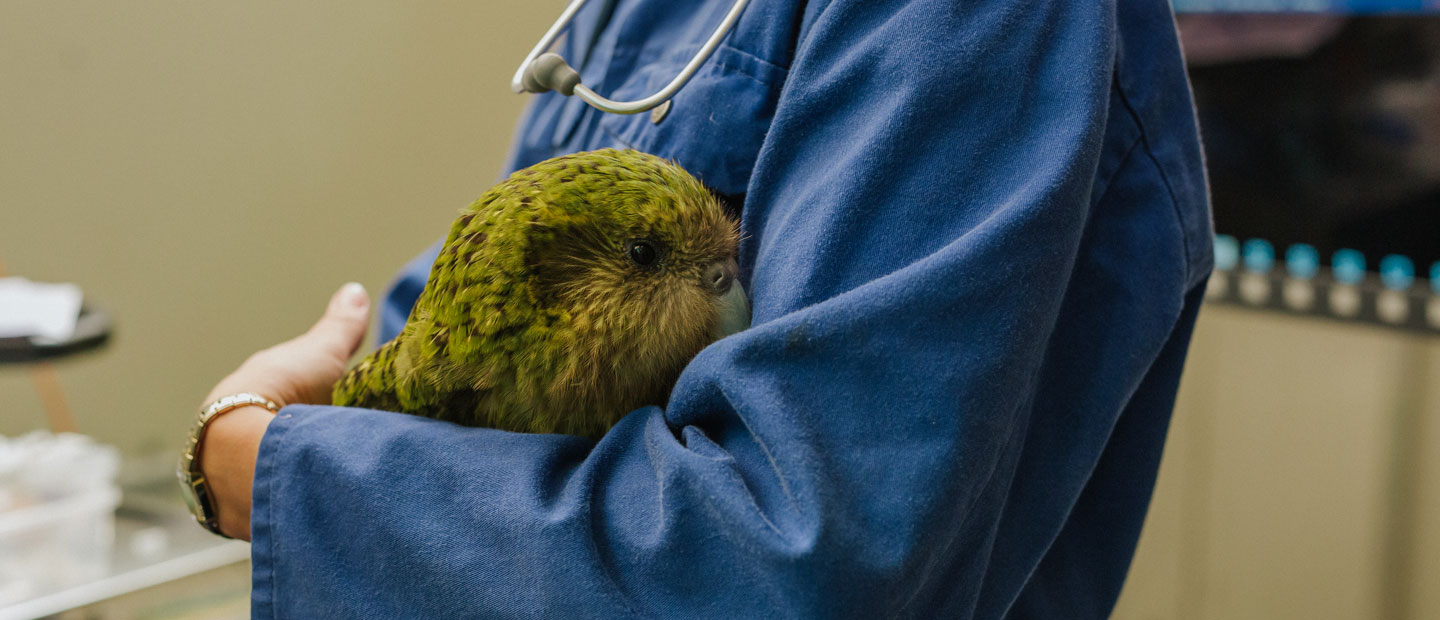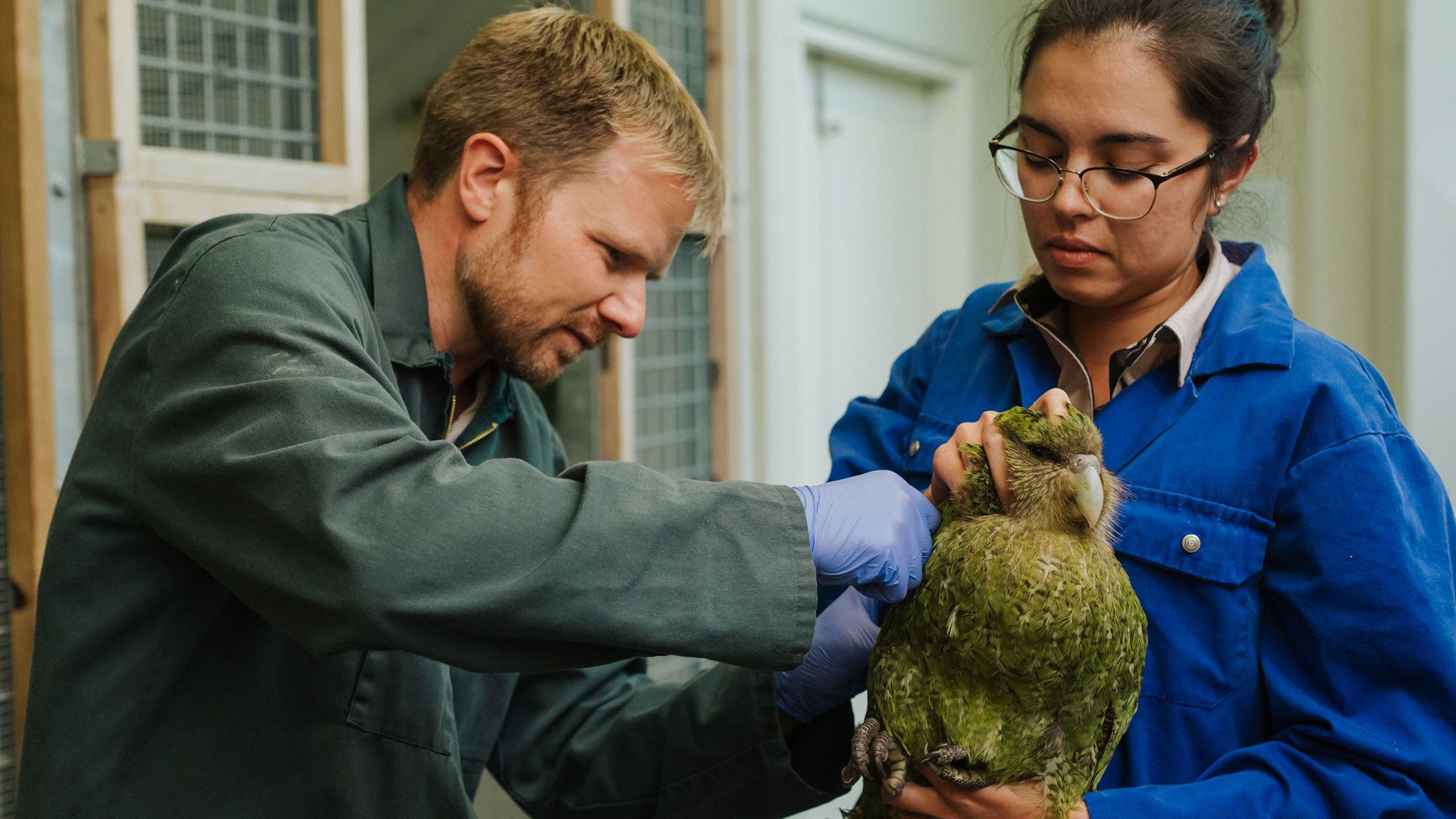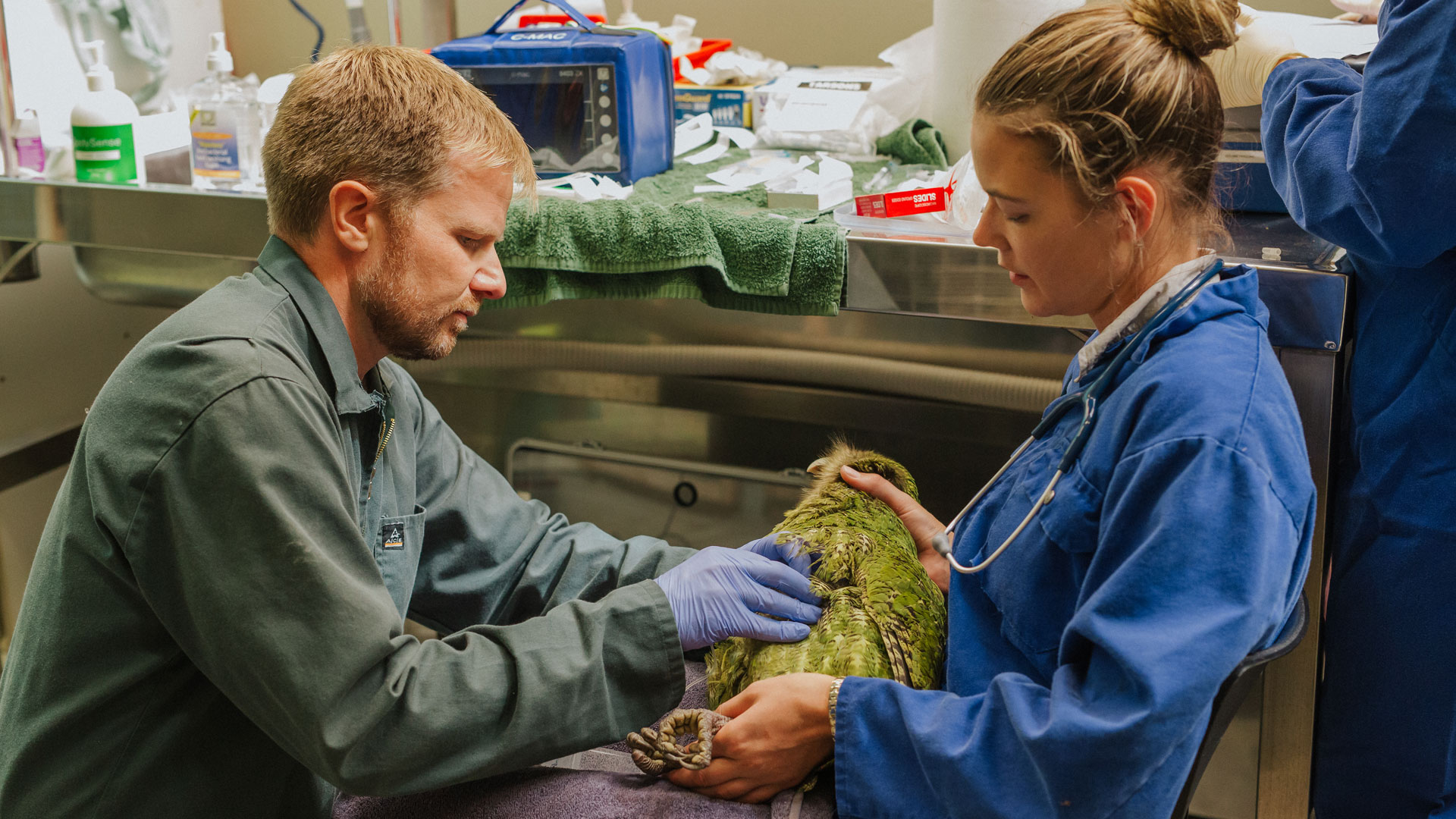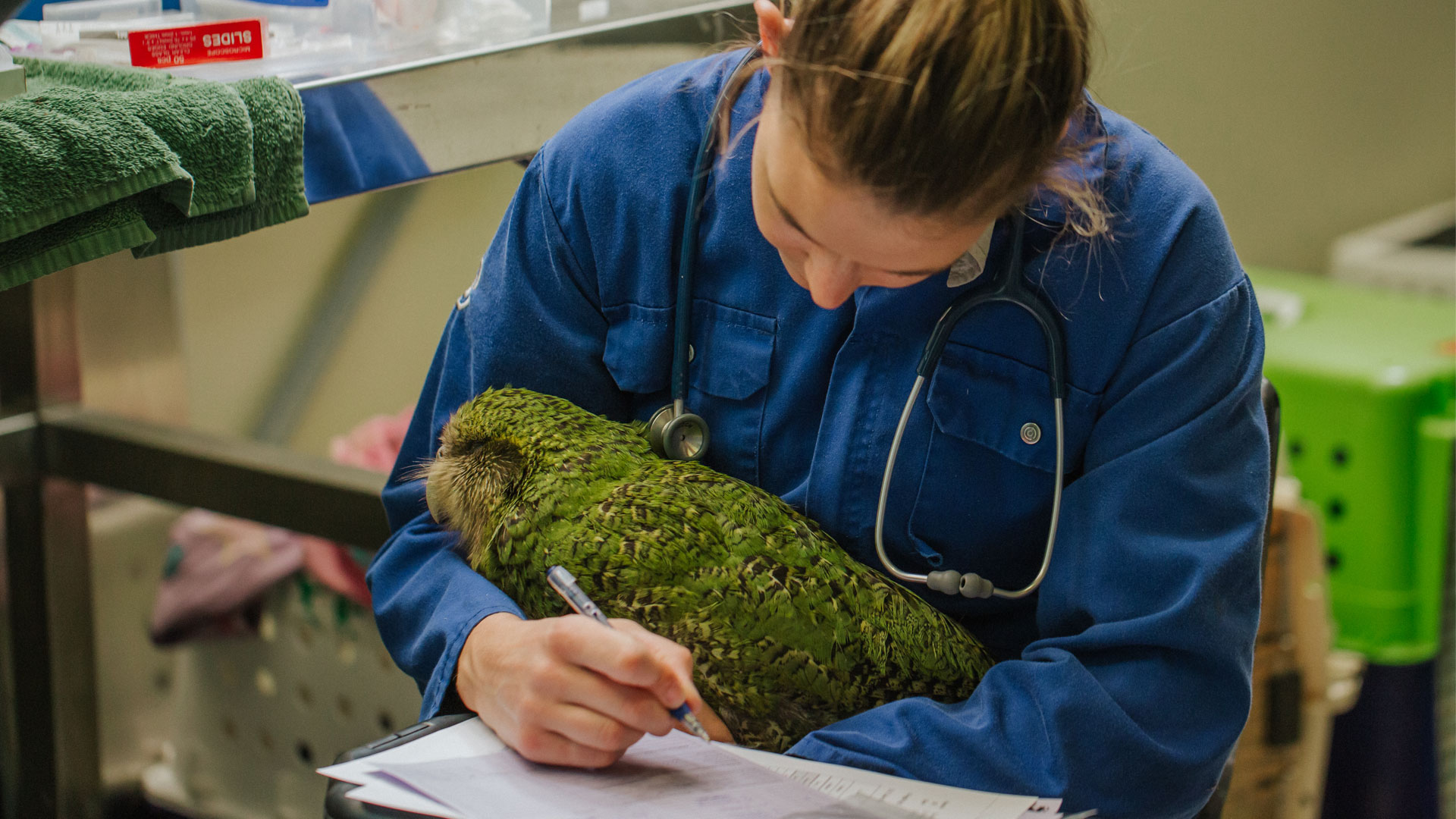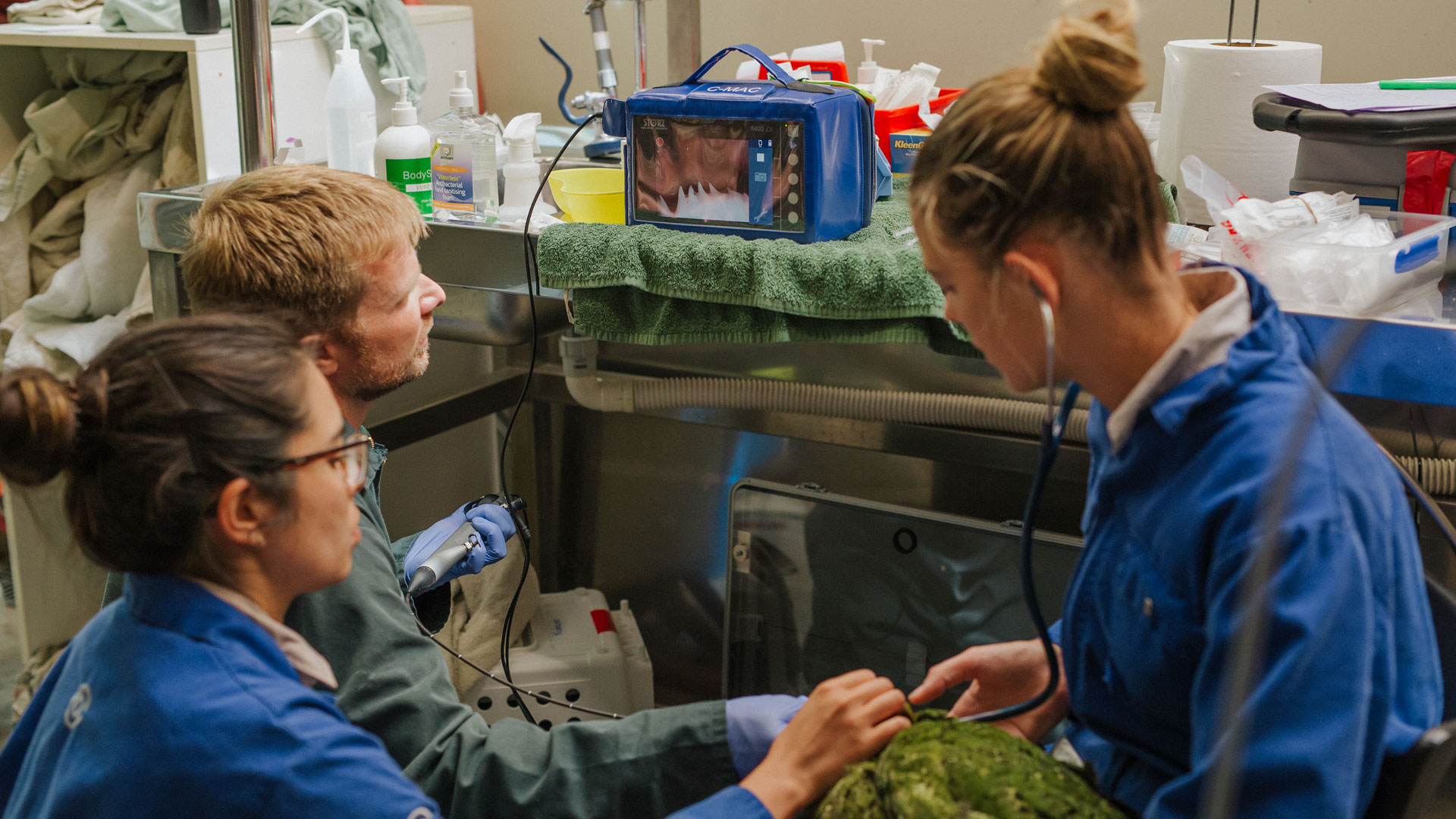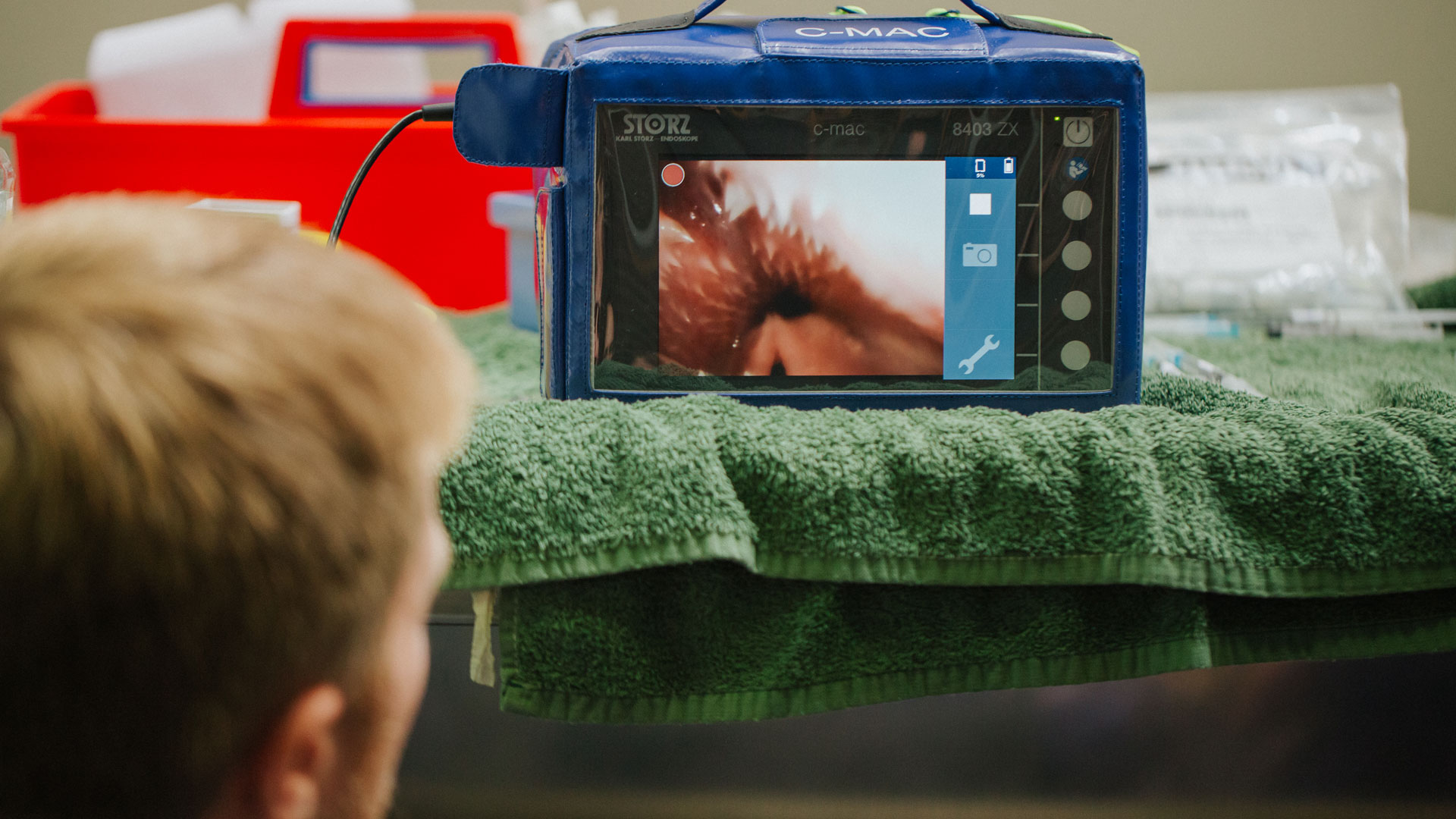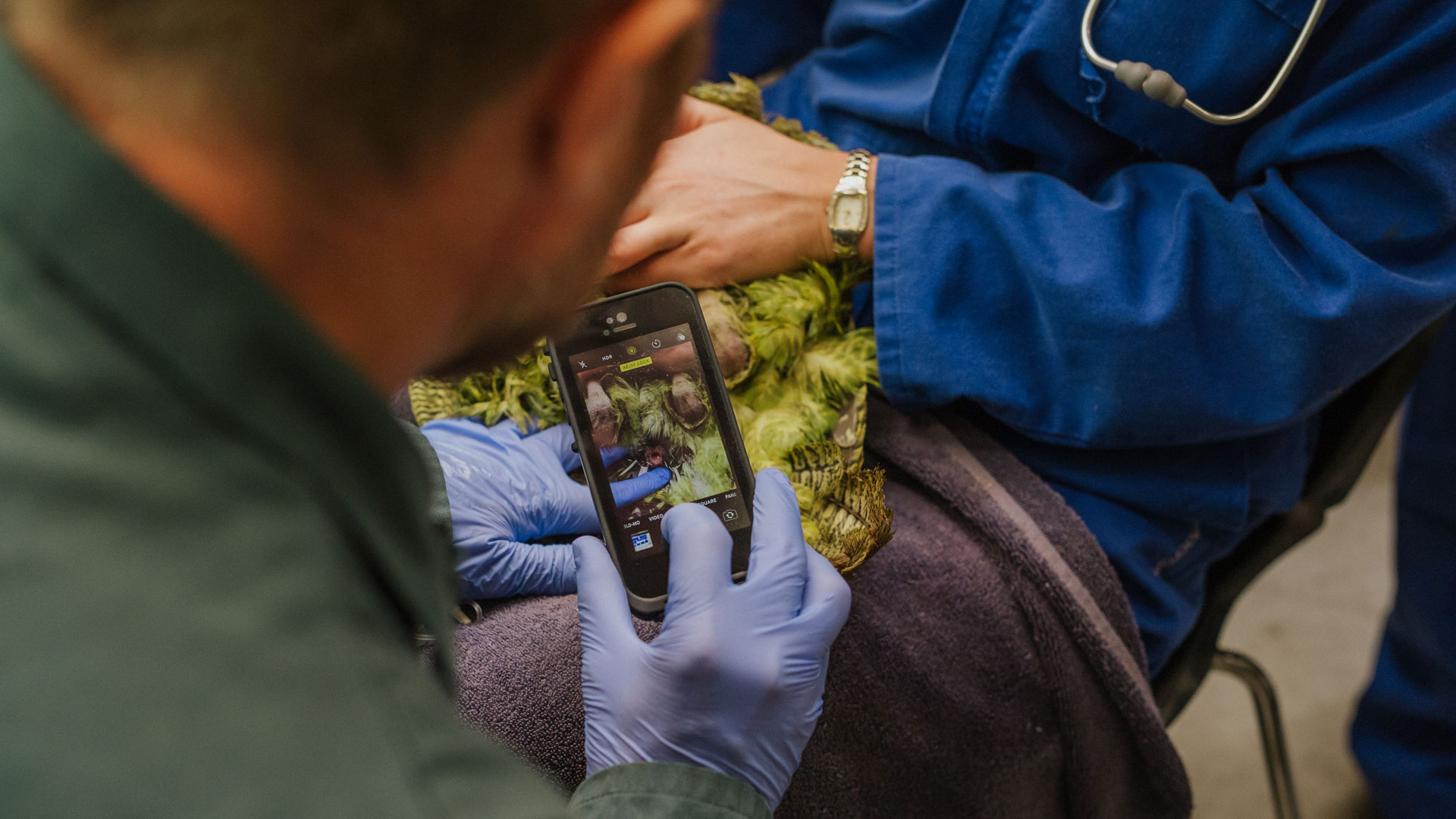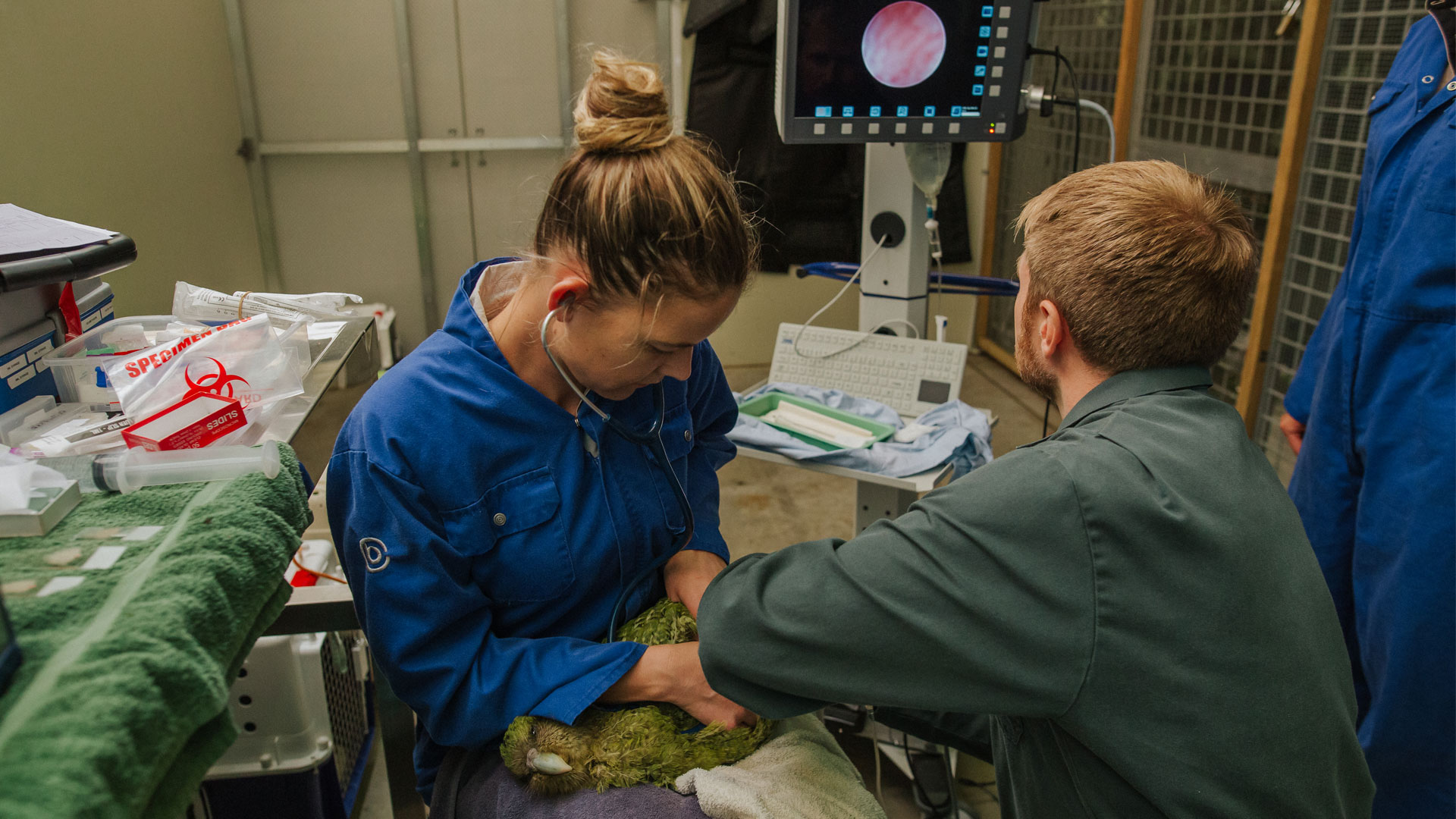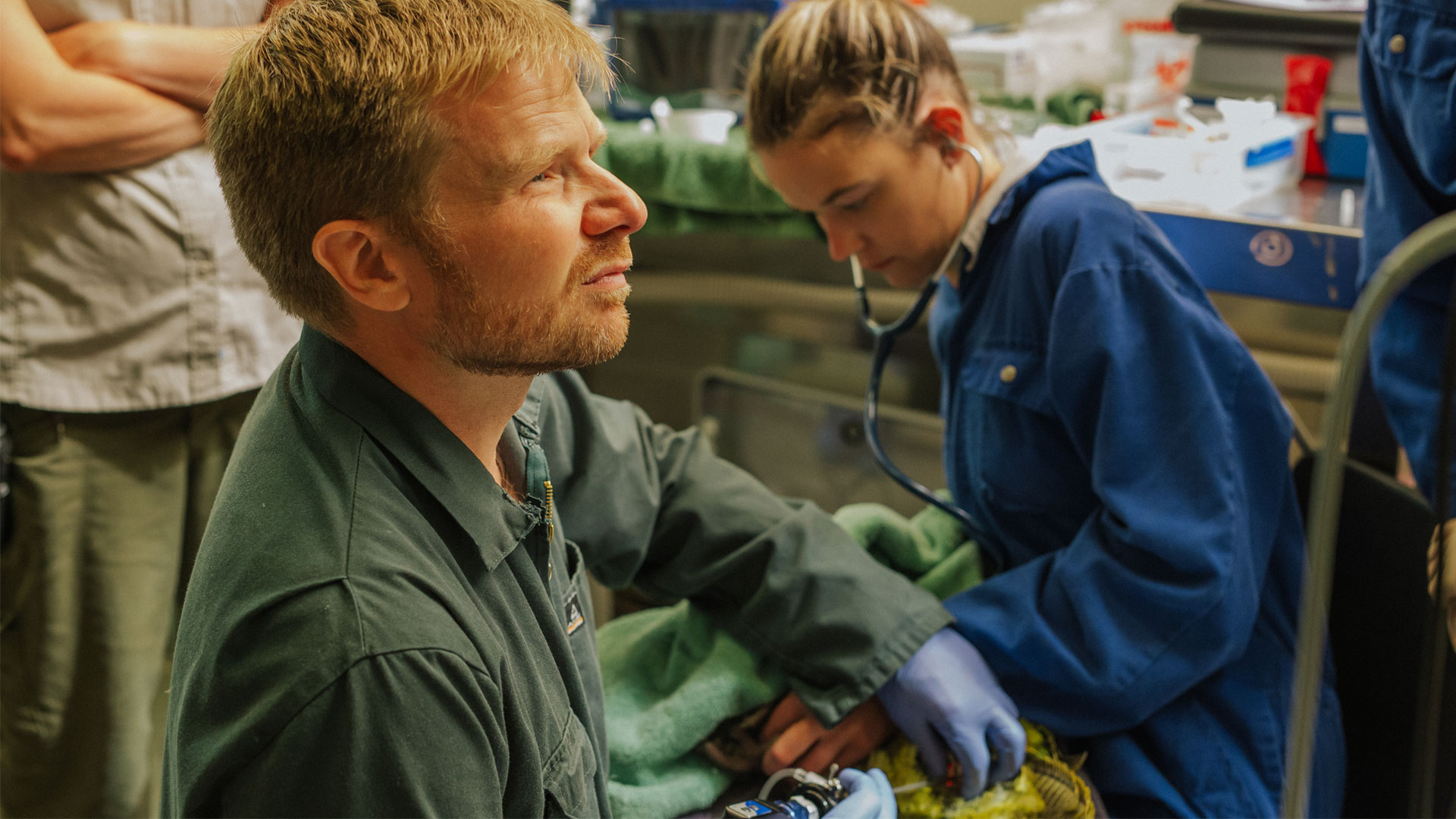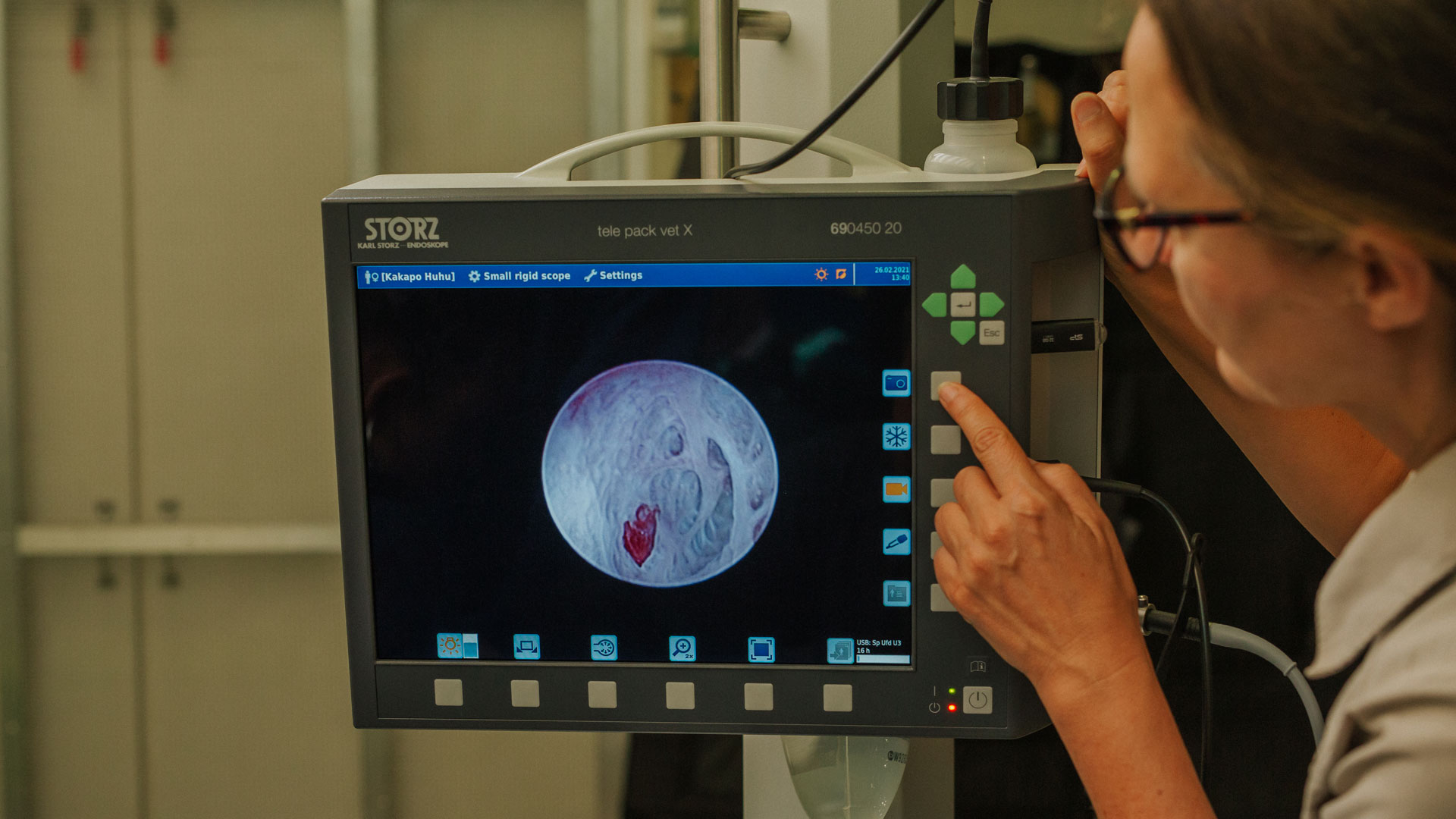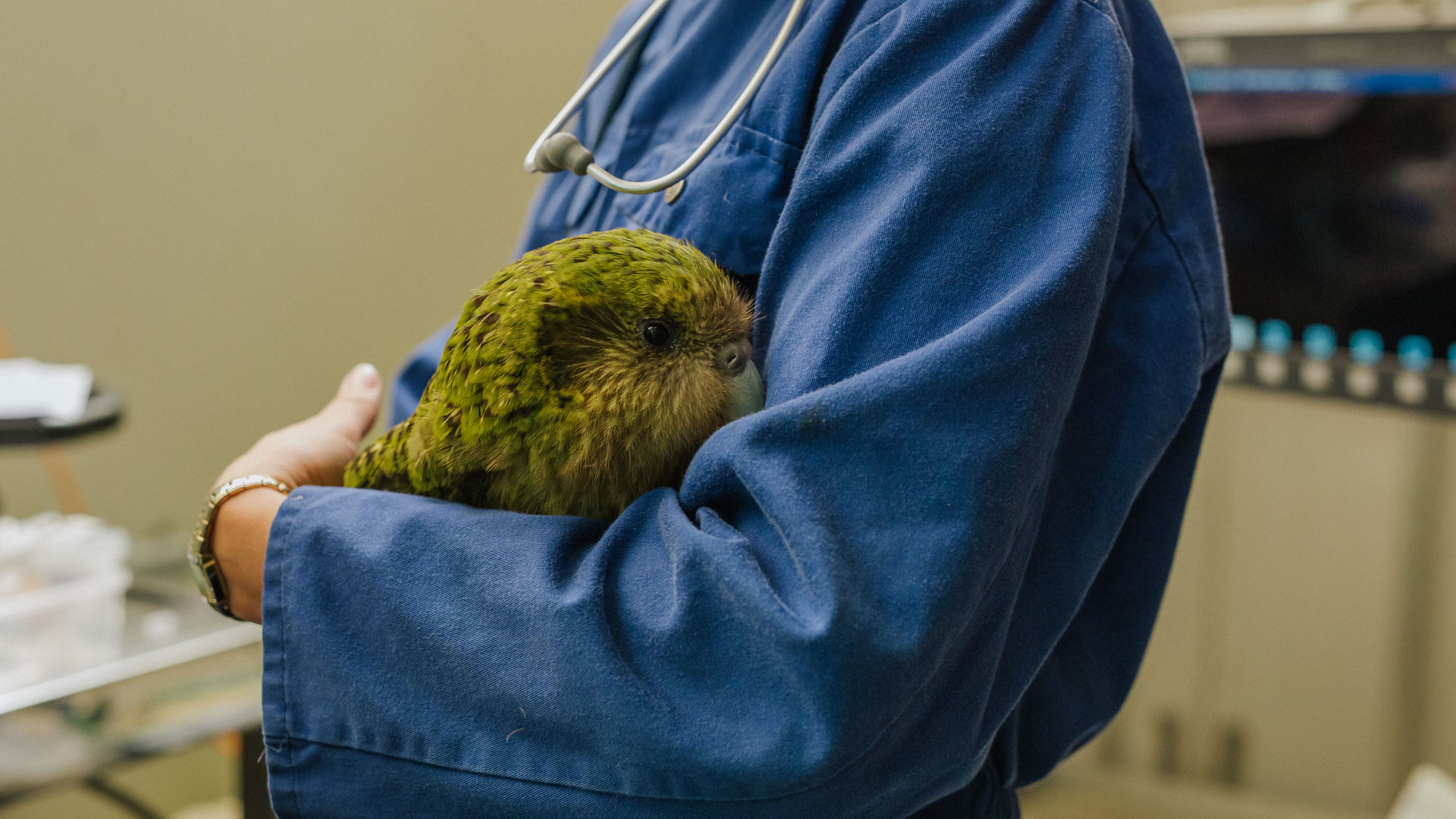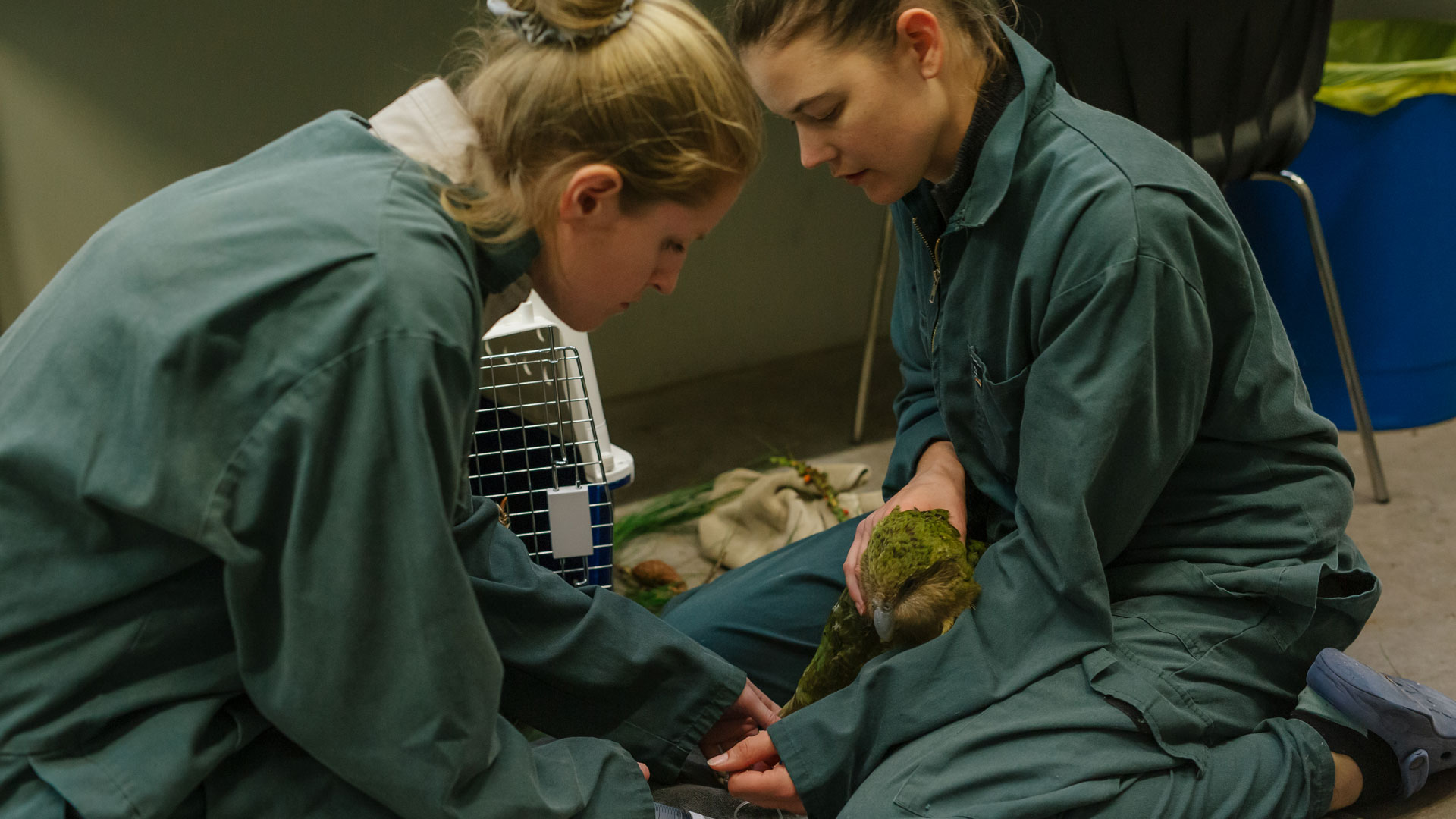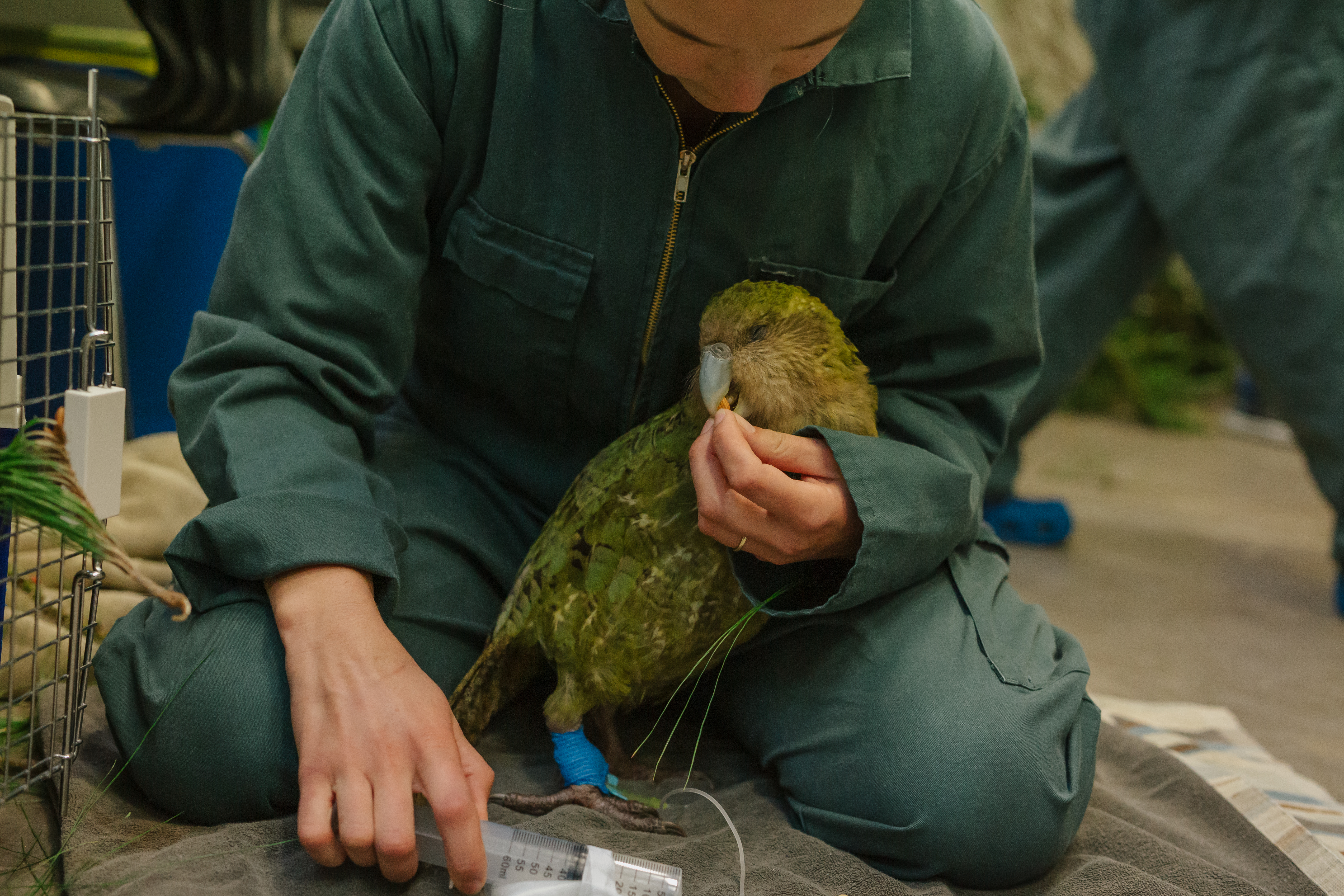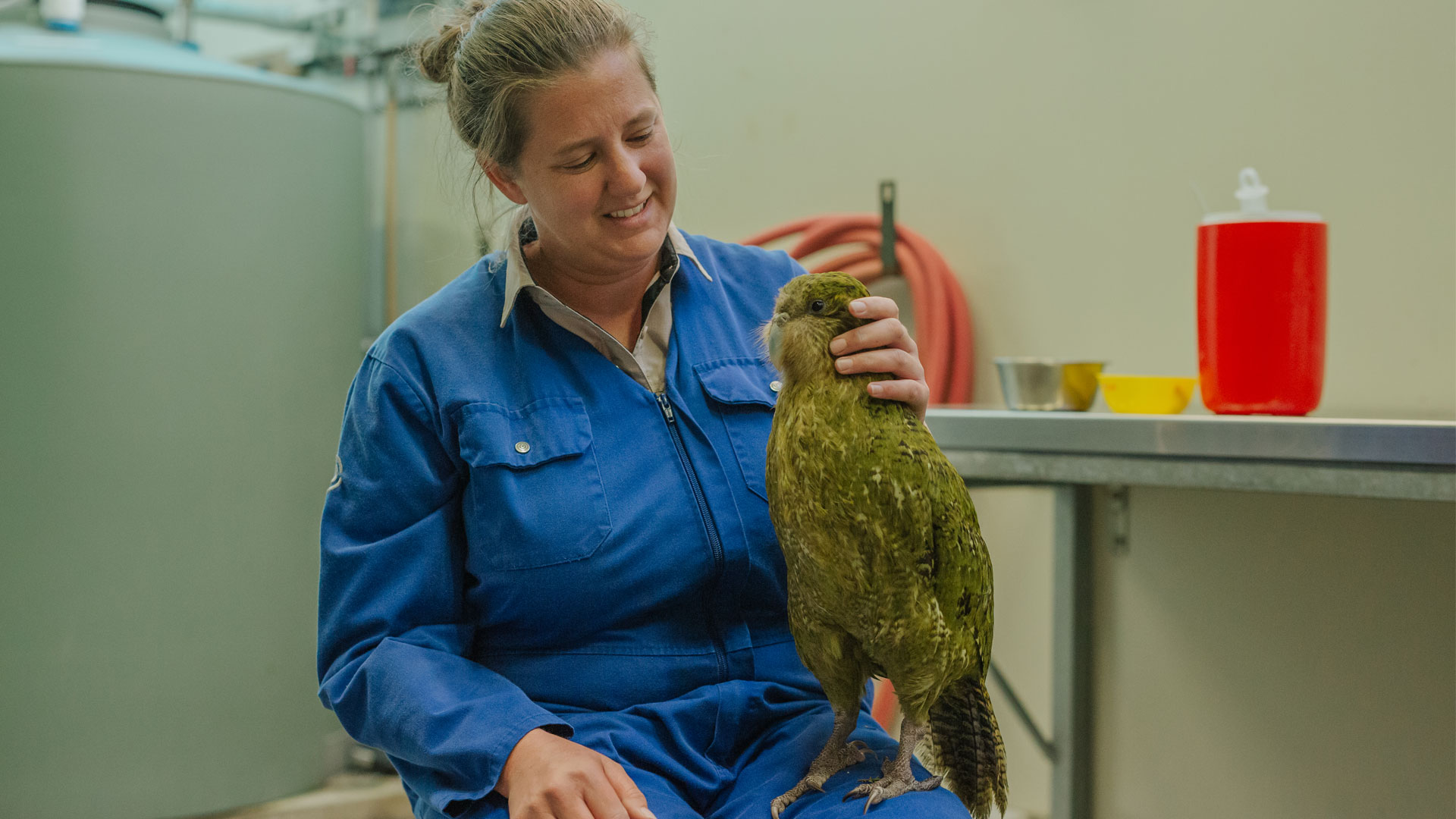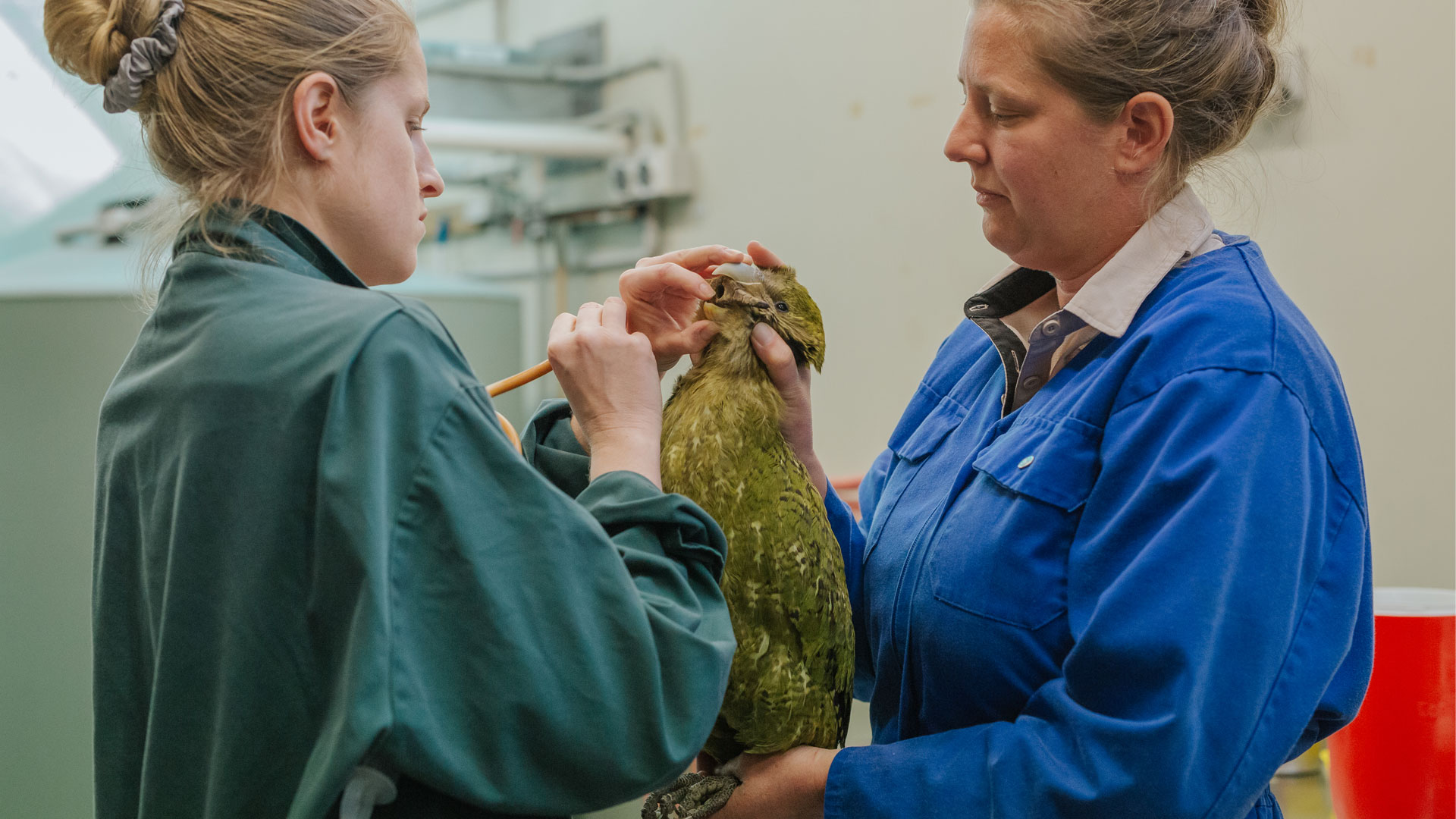Our Auckland Zoo Veterinary team is in awe of kākāpō patients Bravo, Huhū, Tautahi, and now Mati-mā and Hinemoa, for their fighting spirit (quiet and loud!) to overcome a very painful and debilitating illness.
‘A pain in the butt’ is an apt literal description for cloacitis (also called ‘crusty bum’) but it doesn’t even begin to convey the severity of what these precious birds endure.
Cloacitis is inflammation of the skin and mucosa (inner lining) of the cloaca - the hole through which kākāpō excrete waste and female birds lay eggs. In severe cases of cloacitis, deep and painful ulcerations develop which are debilitating, cause reduced appetite and weight loss, often become infected, and can ultimately lead to septicaemia (systemic infection) which could be fatal if left untreated.


